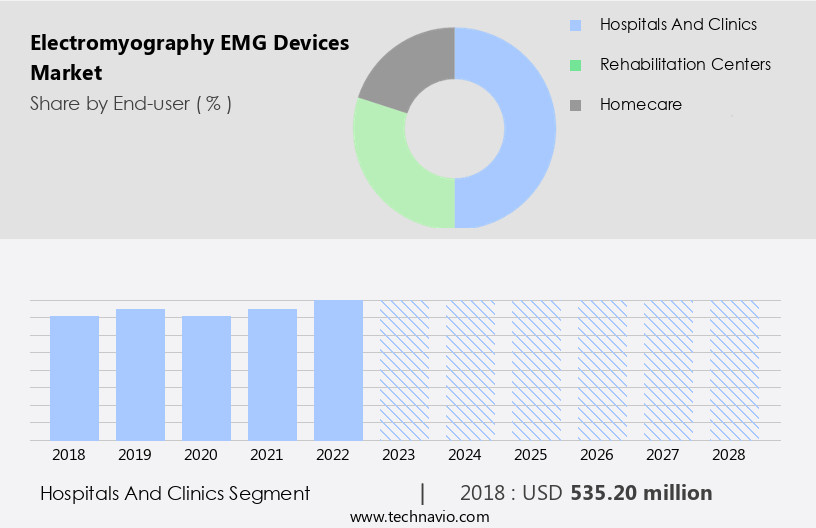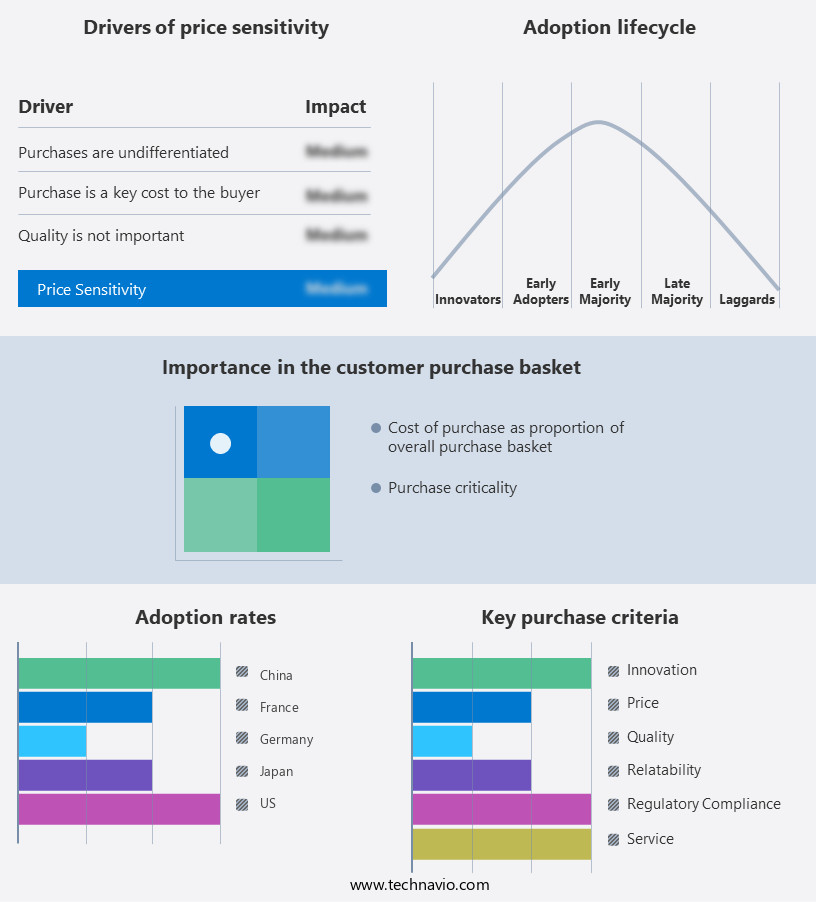Electromyography (EMG) Devices Market Size 2024-2028
The electromyography (EMG) devices market size is forecast to increase by USD 403.2 million, at a CAGR of 7.1% between 2023 and 2028.
- The market is witnessing significant growth due to the increasing prevalence of neuromuscular disorders and the rising use of prosthetic devices. Neuromuscular disorders, such as myasthenia gravis, muscular dystrophies, and peripheral neuropathies, are on the rise, leading to a surge in demand for diagnostic and therapeutic devices, including EMG devices. Moreover, the integration of EMG technology in prosthetic devices is revolutionizing the rehabilitation process for amputees, further fueling market growth. However, the market faces challenges, primarily due to the limitations of EMG devices. These limitations include the invasive nature of some EMG procedures, which may cause discomfort and pain to patients.
- Additionally, the high cost of EMG devices and the complex nature of their operation may hinder market penetration, particularly in developing regions. Companies operating in the EMG Devices Market must address these challenges by developing non-invasive alternatives and offering affordable pricing models to expand their reach and capture a larger market share.
What will be the Size of the Electromyography (EMG) Devices Market during the forecast period?
Explore in-depth regional segment analysis with market size data - historical 2018-2022 and forecasts 2024-2028 - in the full report.
Request Free Sample
The market is characterized by continuous evolution and dynamic market activities. EMG signal decomposition plays a crucial role in neurological assessment, providing valuable insights into muscle activation patterns. Electromyographic sensors, available in various forms such as needle and surface electrodes, are integral to EMG data acquisition. Wireless EMG systems and integrated EMG systems are gaining popularity due to their portability and convenience. Clinical EMG applications span from nerve conduction studies to muscle fiber conduction, muscle fatigue detection, and impedance measurements. These applications find extensive use in rehabilitation centers, orthopedic clinics, and research institutions. EMG signal filtering and interpretation are essential steps in EMG data processing.
Artifact reduction techniques are continually being developed to enhance the accuracy of EMG data. EMG biofeedback devices offer therapeutic benefits by enabling real-time muscle activity monitoring and control. The ongoing advancements in EMG technology are expanding its applications in various sectors. Prosthetics, for instance, are being enhanced with EMG sensors to improve user experience and functionality. The development of portable EMG devices has made neurological assessments more accessible and convenient. In summary, the EMG devices market is marked by continuous innovation and growth. The integration of EMG technology in various sectors, from healthcare to prosthetics, underscores its importance and potential for future developments.
How is this Electromyography (EMG) Devices Industry segmented?
The electromyography (EMG) devices industry research report provides comprehensive data (region-wise segment analysis), with forecasts and estimates in "USD million" for the period 2024-2028, as well as historical data from 2018-2022 for the following segments.
- End-user
- Hospitals and clinics
- Rehabilitation centers
- Homecare
- Modality
- Stationary
- Portable
- Geography
- North America
- US
- Europe
- France
- Germany
- APAC
- China
- Japan
- Rest of World (ROW)
- North America
By End-user Insights
The hospitals and clinics segment is estimated to witness significant growth during the forecast period.
The EMG devices market encompasses various applications, including neurological assessment, rehabilitation, prosthetics, and orthopedics. EMG signal decomposition plays a crucial role in understanding muscle activation patterns, leading to advancements in muscle fiber conduction studies, muscle fatigue detection, and impedance measurements. Electromyographic sensors, available as needle and surface types, facilitate EMG data acquisition, which undergoes filtering and amplification for signal processing. Integrated EMG systems and wireless EMG devices offer portability and convenience, expanding their use in clinical and diagnostic procedures. Needle EMG electrodes provide higher accuracy for nerve conduction studies, while surface EMG electrodes are preferred for rehabilitation applications.
EMG biofeedback devices aid in artifact reduction and signal interpretation, enhancing diagnostic accuracy. Clinical EMG applications include diagnostic procedures, muscle fiber conduction studies, and muscle fatigue detection. EMG signal amplification and classification are essential components of advanced EMG equipment. The hospitals and clinics segment dominates the market due to the high demand for stationary EMG devices, which offer customizable protocols, in-built reference values, and extensive storage capacity.
The Hospitals and clinics segment was valued at USD 535.20 million in 2018 and showed a gradual increase during the forecast period.
Regional Analysis
North America is estimated to contribute 36% to the growth of the global market during the forecast period. Technavio's analysts have elaborately explained the regional trends and drivers that shape the market during the forecast period.
The global EMG devices market experienced significant growth in 2023, with North America leading the way. Advanced healthcare infrastructure, government initiatives, and favorable reimbursement regulations in the US are driving market expansion. The region's large population base, particularly those afflicted with neuromuscular disorders like myasthenia gravis, amyotrophic lateral sclerosis (ALS), and Parkinson's disease, further fuel demand. With over 10 million individuals diagnosed with Parkinson's disease worldwide and an increasing number of motor neuron disease cases, the necessity for accurate diagnostic tools is paramount. EMG devices play a crucial role in neurological assessments, providing valuable insights into muscle activation patterns, fiber conduction, and fatigue detection.
These devices employ various technologies, including needle and surface electrodes, integrated and wireless systems, and EMG signal processing for artifact reduction. Applications span from clinical settings to rehabilitation centers and even prosthetics. As technology advances, portable and user-friendly devices are gaining popularity, offering convenience and accessibility. Market trends include EMG signal filtering, amplification, and classification for improved accuracy and interpretation. Impedance measurements and nerve conduction studies are essential components of these devices, contributing to their diagnostic capabilities. In orthopedics, EMG devices aid in assessing muscle function and guiding treatment plans. Overall, the EMG devices market is expected to continue its growth trajectory, driven by technological advancements and increasing demand for early and accurate diagnosis of neuromuscular disorders.
Market Dynamics
Our researchers analyzed the data with 2023 as the base year, along with the key drivers, trends, and challenges. A holistic analysis of drivers will help companies refine their marketing strategies to gain a competitive advantage.
Electromyography (EMG) devices have gained significant attention in the healthcare industry due to their ability to assess muscle function and provide valuable information for neurological rehabilitation. EMG signal decomposition techniques play a crucial role in extracting meaningful information from raw EMG data. The selection criteria for EMG electrode materials are essential to ensure accurate and reliable recordings, with factors such as impedance, biocompatibility, and durability being key considerations. Clinical applications of surface EMG span from diagnosing neuromuscular disorders to monitoring muscle activity during rehabilitation programs. EMG data acquisition systems must be designed with precision to ensure accurate and reliable data collection. This includes factors such as amplifier gain, filtering, and sampling rate. EMG signal processing algorithms are critical for extracting useful information from raw EMG data. These algorithms can include techniques such as waveform analysis, time-domain analysis, and frequency-domain analysis. Neurological rehabilitation using EMG is a growing field, with applications including stroke rehabilitation, spinal cord injury rehabilitation, and Parkinson's disease treatment. EMG is also used for assessing muscle function in various clinical settings, such as in the diagnosis of musculoskeletal disorders and in the evaluation of athletic performance. EMG-based gait analysis methods are becoming increasingly popular for assessing gait patterns in individuals with neurological disorders or injuries. EMG device validation protocols are essential to ensure the accuracy and reliability of EMG devices. These protocols include calibration procedures, electrical safety testing, and performance testing. A clear and concise EMG data interpretation guideline is essential for healthcare professionals to accurately interpret EMG data and make informed clinical decisions. The EMG devices market is expected to grow significantly in the coming years due to the increasing demand for non-invasive diagnostic and therapeutic tools in the healthcare industry. Market research reports provide valuable insights into the latest trends and developments in the EMG devices market, including advancements in technology, regulatory requirements, and competitive landscape.
What are the key market drivers leading to the rise in the adoption of Electromyography (EMG) Devices Industry?
- The rising incidence of neuromuscular disorders serves as the primary catalyst for market growth in this sector.
- EMG devices have gained significant importance in the healthcare industry due to the rising prevalence of neuromuscular disorders, such as ALS, Duchenne muscular dystrophy, limb-girdle muscular dystrophy, and spinal muscular atrophy. These chronic conditions necessitate regular monitoring and proper management, leading to an increased demand for EMG devices. According to the Centers for Disease Control and Prevention (CDC), the prevalence of ALS in the US during 2010-2011 was 3.9 cases per 100,000 persons. Neuromuscular disorders affect a substantial population, with the prevalence ranging from 1 to 10 people per 100,000. The higher incidence of spinal muscular atrophy, which affects four out of every 50,000 individuals, further contributes to the market growth.
- EMG signal decomposition plays a crucial role in the diagnosis and management of these disorders by providing valuable insights into muscle activation patterns. The advancements in technology have led to the development of wireless and integrated EMG systems for data acquisition, making the assessment process more convenient and efficient.
What are the market trends shaping the Electromyography (EMG) Devices Industry?
- The use of prostheses is becoming increasingly common in the current market trend. This growing reliance on advanced prosthetic technology reflects the ongoing advancements in healthcare and medical technology.
- Electromyography (EMG) technology, which involves recording the electrical activity of muscles, is revolutionizing the field of prosthetic rehabilitation. Traditional prosthesis advancements have primarily focused on material enhancements. However, the integration of neural interfacing, or brain-computer interfaces, is a groundbreaking development. This innovative approach uses electrical signals from the brain to control prosthetic limb movement, creating a more immersive and harmonious experience for users. Implantable needle EMG electrodes are employed to enhance the sensitivity and accuracy of the prosthesis. Although these advanced systems can be costly due to the need for surgical implantation, they offer significant improvements for individuals seeking to regain natural limb functionality.
- EMG equipment plays a crucial role in this process, including signal filtering and data interpretation to ensure accurate control of the prosthesis. The application of EMG technology in prosthetic rehabilitation is a testament to the ongoing advancements in bioengineering and neurotechnology.
What challenges does the Electromyography (EMG) Devices Industry face during its growth?
- The growth of the industry faces significant limitations due to the constraints of Electromyography (EMG) devices, which poses a substantial challenge that necessitates continuous innovation and improvement in technology.
- EMG devices are essential tools used in nerve conduction studies and various clinical applications, including prosthetics. These devices measure muscle fiber conduction, muscle fatigue detection, and impedance measurements. However, several factors can impact signal detection and accuracy during Electromyography (EMG) tests. Physiological factors, such as non-homogeneity between the skin and the electrode, the number of active motor units, and differences in motor unit conduction velocity, can affect EMG signal detection. These factors cannot be controlled by the user but can be minimized. The structure of the electrode and its distance from the muscle under investigation are also significant factors that influence signal detection.
- In some cases, the presence of intermediate muscles and EKG signals can create noise, making it difficult to detect signals from the muscle of interest. Portable EMG devices have gained popularity due to their convenience and ease of use in various clinical settings. These devices offer real-time analysis and are ideal for muscle fatigue detection and monitoring muscle activity during physical therapy sessions. Despite their benefits, EMG devices' accuracy and signal detection can be influenced by various factors, making it essential to understand these limitations to obtain reliable results.
Exclusive Customer Landscape
The electromyography (EMG) devices market forecasting report includes the adoption lifecycle of the market, covering from the innovator's stage to the laggard's stage. It focuses on adoption rates in different regions based on penetration. Furthermore, the electromyography (EMG) devices market report also includes key purchase criteria and drivers of price sensitivity to help companies evaluate and develop their market growth analysis strategies.
Customer Landscape
Key Companies & Market Insights
Companies are implementing various strategies, such as strategic alliances, electromyography (EMG) devices market forecast, partnerships, mergers and acquisitions, geographical expansion, and product/service launches, to enhance their presence in the industry.
Allengers Medical Systems Ltd. - This company specializes in electromyography technology, providing advanced devices such as the Neuropod electroencephalograph, Virgo electroencephalograph machine, and Scorpio electromyograph machine.
The industry research and growth report includes detailed analyses of the competitive landscape of the market and information about key companies, including:
- Allengers Medical Systems Ltd.
- Ambu AS
- American Association of Neuromuscular and Electrodiagnostic Medic
- Biometrics Ltd
- BioRESEARCH Associates Inc.
- Bittium Corp.
- BTS Bioengineering Corp.
- Cadwell Industries Inc.
- Clarity Medical Pvt. Ltd
- Compumedics Ltd.
- Contec Medical Systems Co. Ltd.
- DEYMED Diagnostic sro
- Dragerwerk AG and Co. KGaA
- EMS Handels Gesellschaft mbH
- Magstim EGI
- Medtronic Plc
- Natus Medical Inc.
- NCC Medical
- Nihon Kohden Corp.
- Noraxon USA Inc.
Qualitative and quantitative analysis of companies has been conducted to help clients understand the wider business environment as well as the strengths and weaknesses of key industry players. Data is qualitatively analyzed to categorize companies as pure play, category-focused, industry-focused, and diversified; it is quantitatively analyzed to categorize companies as dominant, leading, strong, tentative, and weak.
Recent Development and News in Electromyography (EMG) Devices Market
- In January 2024, Medtronic, a leading medical technology company, announced the FDA approval of its new EMG system, the Nexus WE1 System. This advanced system offers real-time data processing and wireless connectivity, enhancing diagnostic accuracy and efficiency (Medtronic Press Release, 2024).
- In March 2024, Natus Medical Incorporated, a leading provider of medical devices, entered into a strategic partnership with the University of California, San Francisco (UCSF) to develop and commercialize a new EMG device for the early detection and treatment of neuromuscular disorders. This collaboration combines UCSF's clinical expertise with Natus's technological capabilities (Natus Medical Press Release, 2024).
- In May 2024, Hospira Worldwide, a leading supplier of injectable drugs and infusion technologies, acquired EMG Systems, a prominent manufacturer of EMG devices. This acquisition strengthened Hospira's portfolio in the diagnostics sector and expanded its reach in the neuromuscular disorders market (Hospira Worldwide Press Release, 2024).
- In February 2025, Abbott Laboratories, a global healthcare company, received CE mark approval for its new portable EMG device, the ThermoEMG Nerve Stimulator. This compact, battery-operated device offers real-time data analysis and wireless connectivity, enabling faster and more convenient diagnoses (Abbott Laboratories Press Release, 2025).
Research Analyst Overview
- The Electromyography (EMG) device market encompasses a range of technologies designed to measure muscle activity. Market trends include a focus on EMG device portability, enabling real-time analysis during various activities. EMG amplitude and frequency analysis are essential features for diagnosing neuromuscular disorders. EMG data transmission and storage solutions facilitate remote monitoring and data sharing. EMG sensor calibration and signal quality are crucial for accurate results. Advanced EMG application software offers waveform analysis, muscle activation timing, and clinical trial data integration. EMG hardware components, including sensors and electrodes, undergo continuous innovation to enhance precision, reliability, and cost-effectiveness. EMG device safety and ergonomics are essential considerations for user comfort and long-term use.
- EMG system validation and research methodology ensure the credibility of clinical findings. EMG noise cancellation technology improves signal accuracy, while precision and software features cater to diverse applications. EMG device maintenance and sensor technology evolution are key drivers for market growth. EMG data visualization tools facilitate easier interpretation of complex data, and device reliability remains a priority for healthcare professionals. Overall, the EMG device market continues to evolve, catering to the growing demand for advanced muscle activity analysis solutions.
Dive into Technavio's robust research methodology, blending expert interviews, extensive data synthesis, and validated models for unparalleled Electromyography (EMG) Devices Market insights. See full methodology.
|
Market Scope |
|
|
Report Coverage |
Details |
|
Page number |
159 |
|
Base year |
2023 |
|
Historic period |
2018-2022 |
|
Forecast period |
2024-2028 |
|
Growth momentum & CAGR |
Accelerate at a CAGR of 7.1% |
|
Market growth 2024-2028 |
USD 403.2 million |
|
Market structure |
Fragmented |
|
YoY growth 2023-2024(%) |
6.5 |
|
Key countries |
US, Germany, Japan, France, and China |
|
Competitive landscape |
Leading Companies, Market Positioning of Companies, Competitive Strategies, and Industry Risks |
What are the Key Data Covered in this Electromyography (EMG) Devices Market Research and Growth Report?
- CAGR of the Electromyography (EMG) Devices industry during the forecast period
- Detailed information on factors that will drive the growth and forecasting between 2024 and 2028
- Precise estimation of the size of the market and its contribution of the industry in focus to the parent market
- Accurate predictions about upcoming growth and trends and changes in consumer behaviour
- Growth of the market across North America, Europe, Asia, and Rest of World (ROW)
- Thorough analysis of the market's competitive landscape and detailed information about companies
- Comprehensive analysis of factors that will challenge the electromyography (EMG) devices market growth of industry companies
We can help! Our analysts can customize this electromyography (EMG) devices market research report to meet your requirements.




